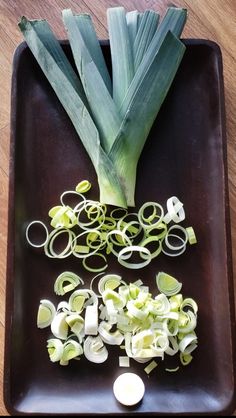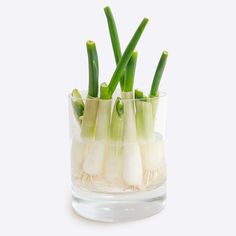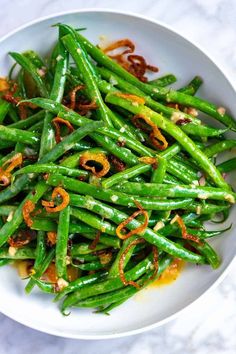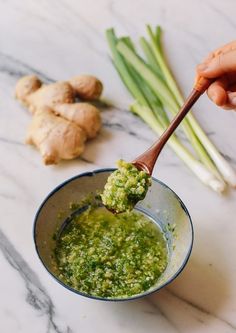Scallions Vs Shallots: Which Is Better?

In this post, we’ll learn about the distinctions between scallions and shallots, as well as other varieties of onions and how they’re used to enhance the flavor of foods.
The look and flavor of scallions and shallots are the key differences. Although they have distinct appearances, people frequently confuse them due to their similar names.
Scallions

They are a variety of baby onions, also known as spring onions or green onions, like onions, shallots, leeks, and garlic, belonging to the Allium family.
Scallions are created from a green stalk and a white bulb that hasn’t fully grown. Various recipes call for both halves of the onions.
The green stalks have a fresh and grassy onion flavor, while the white bulbs have a sweet, faint onion flavor. Scallions are used in stir-fries, marinades, sauces, salad dressings, and various other fresh and cooked recipes.
Shallots

They are related to scallions and belong to the same family. They have the appearance of a little elongated onion with a mild onion-garlic taste and a copper-red peel.
Shallots grow in bunches underground, similar to garlic. They might have anywhere from 2 to 6 cloves within, depending on their size.
Because of their mild flavor, it goes great with salads, pasta dishes, sandwiches, sauces, green beans, roast potatoes, and other foods.
Scallions vs Shallots, What is the difference between them?
In many respects, scallions and shallots are different.
The first distinction is their physical appearance. Scallions have a white bulb and long green stalks, but shallots have a copper-red peel and appear like small elongated onions.
The second distinction is the method of harvesting. Shallots are gathered as grown onions that form a bulb and are separated into cloves. Before the bulbs have fully matured, scallions are picked.
Their taste is the third distinction. The green sections of the scallions have a fresh and grassy onion flavor, while the white parts have a faint and mild onion flavor. Shallots have a subtle onion-garlic taste with a hint of sweetness.
Consumption is the fourth difference. Scallions and shallots can be eaten fresh or cooked. Scallions go nicely with fried rice, stir-fries, noodles, soups, salads, fish, and meat meals, as well as as a garnish. However, they are also wonderful baked, sautéed, or grilled.
Caramelized shallots are the most delectable, but they may also be braised, sautéed, glazed, roasted, or eaten raw. Sauces, salads, soups, green beans, risottos, and sandwiches all include them.
The nutrition and health advantages of scallions and shallots are the fifth distinction.
Scallions are higher in vitamins A and C and minerals such as iron and calcium. On the other hand, Shallots have a higher carbohydrate, calorie, potassium, and protein content than scallions.
In any case, they’re both nutritious items that will help you.
Scallions vs Green Onions vs Shallots

The variation between green onions and scallions can be found in the development stage at which they are collected.
Scallions are collected when their bulbs are still tiny and narrow, but green onions are taken when they are older and have a broader, ovular white bulb. Green onions are scallions that are older.
They have similar tastes and complement each other well in the same meals. On the other hand, Shallots differ from scallions and green onions in look and flavor.
Scallions vs Shallots vs Chives
Like scallions, garlic, leeks, and onions, Chives belong to the allium family. They’re commonly used to garnish salads, eggs, dips, soups, fried vegetables, butter, soft cheeses, and other meals.
Chives have long, slender green stalks with lovely purple blossoms used as a garnish to add color to meals. The blooms of the chives have a lighter flavor than the steams, which have an onion-like flavor.
Can I Substitute Shallots for Scallions?
In cooked recipes, shallots can be used instead of scallions.
Shallots have a stronger taste than scallions, so if you use them uncooked, they will dominate the other flavors in the meal. When shallots are cooked, they caramelize and give the dish a sweet onion flavor.
Shallots can be used in place of scallions in a 1:1 ratio.
You may also eat them uncooked, but only in tiny amounts, as they have a greater onion flavor with a tinge of garlic that scallions don’t have.
What are Scallions called in Australia?

In Australia, scallions are known as spring onions or green onions. They have a moderate flavor and may be used raw or cooked in various cuisines.
Scallions are known by different names in different parts of Australia. People are becoming perplexed as a result of this. Also, they might not realize that scallions, green onions, and spring onions are distinguished by the stage of development at which they are picked.
Green onions have the largest bulbs, whereas scallions have the smallest. The bulbs of spring onions, on the other hand, are spherical.
Why do chefs use Shallots instead of Onions?
Chefs favor shallots to onions because they have a sweeter flavor.
To increase the flavor and texture of shallots, they use them raw in salads, sauces, custards, and vinaigrettes, as well as braised and slow-roasted meals. Because shallots caramelize, dissolve, and impart a lovely sweet taste to recipes when cooked.
They don’t add water to the meal or overpower it with onion taste. Shallots have a distinct flavor and are frequently utilized by chefs in various cuisines.
Is Shallot a Green Onion?
A shallot is not like a green onion.
Green onions are also called scallion or spring onion. It features a white bulb that isn’t fully developed and green stalks that may be cooked or uncooked in dishes.
A shallot is a little onion with an onion-garlic flavor and a copper-red peel that may be used uncooked or cooked in many dishes.
Why are Shallots so Expensive?
Because commercial production of shallots is restricted in the United States, they are pricey. Shallots are imported from foreign nations since they don’t grow well on American soil.
Shallot production is restricted in the United States because when the light comes into contact with the roots of the shallots, nitrogen dioxide is released. When nitrogen dioxide reacts with water, it then produces hydrochloric acid, toxic to shallot growers.
In a nutshell, this is why they are not made in the United States and have such a high price. If shallots are too pricey for you, you may replace them with yellow onions.
Are Shallots and Onions the same thing?
Onion and shallot are not all the same thing.
There are many different onions, each flavor, color, and texture. You can use yellow, red, or green onion raw or cooked depending on the meal. Shallots resemble onions, but they are not the same. It has a milder flavor than onion and grows in clusters.
As a result, it may be caramelized, braised, pureed, or roasted and is used in salads, sauces, and vinaigrettes. Onion and shallot have distinct tastes, looks, and nutritional values and are used in various cuisines.
Even though they are connected, they are not the same in general.











